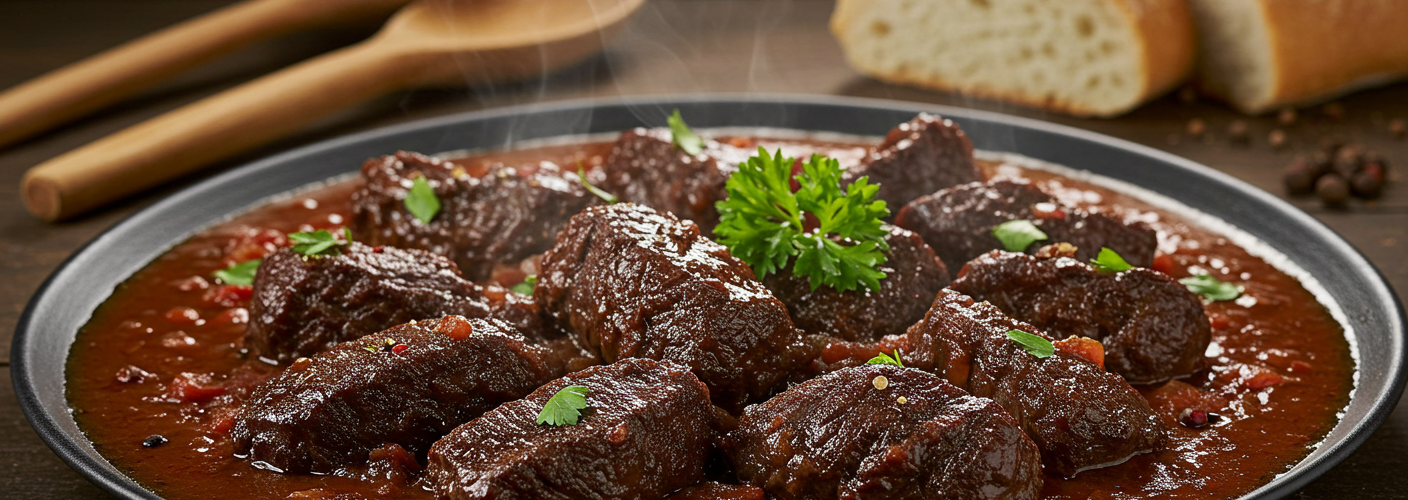When it comes to Latin American cuisine, few dishes can match the warmth and depth of flavor found in Asado Negro. This traditional Venezuelan recipe, featuring beef slow-cooked in a rich wine sauce, encapsulates the essence of comfort food while providing a glimpse into the culinary heritage of the region. For those looking to explore new flavors or connect with their roots, Asado Negro is a must-try dish.
The Origins of Asado Negro
Asado Negro, which translates to “black roast,” has its roots deeply embedded in Venezuelan culture. The dish is often associated with family gatherings and special occasions, serving as a testament to the tradition of cooking with love. The combination of beef and wine not only enhances the flavor but also reflects the agricultural richness of the land, where both components are staples in traditional Venezuelan cooking.
While recipes may vary slightly across families and regions, the central concept remains consistent: a tender cut of beef, typically a chuck or a brisket, is seared to create a rich crust before being slowly braised in a marinade of red wine, spices, and sometimes, a hint of sweetness from sugar or molasses. This careful preparation allows the beef to absorb the flavors, resulting in a dish that is both savory and slightly sweet.
Ingredients and Preparation
To prepare Asado Negro, a few key ingredients are essential:
- Beef: Choosing the right cut is crucial. Chuck roast is a popular choice due to its marbling, which breaks down during the long cooking process, creating a tender and juicy result.
- Red wine: The wine is not only a primary flavoring agent but also helps to tenderize the meat. A good quality dry red wine works best.
- Aromatics and spices: Onions, garlic, and bell peppers are commonly used, along with spices like bay leaves, cumin, and black pepper.
- Sweetening agents: Some recipes incorporate brown sugar or even a splash of vinegar to balance out the flavors.
Preparation begins with searing the beef in a large pot to lock in its juices. Following that, the aromatic vegetables are added, followed by the wine and spices. The mixture is then brought to a simmer before being covered and left to braise for several hours — patience is key. The long, slow cooking process allows the flavors to meld beautifully, resulting in a rich, dark sauce that is perfect for spooning over the hearty meat.
Serving Suggestions
Asado Negro is traditionally served with sides that can absorb its luscious sauce. Popular accompaniments include:
- Rice: A fluffy white rice is a simple yet effective pairing, allowing the dish’s flavors to shine.
- Plantains: Fried or baked, plantains offer a sweet contrast to the savory beef.
- Salad: A fresh green salad can provide a refreshing balance to the meal, complementing the richness of the stew.
Conclusion
Asado Negro is more than just a dish; it’s an experience that tells a story of culture and community through food. With its deep flavors and tender texture, it invites everyone to gather around the table, share, and create lasting memories. Whether you are a seasoned cook looking to expand your repertoire or someone seeking to discover the delights of Venezuelan cuisine, Asado Negro is a dish that promises satisfaction in every bite. So roll up your sleeves, gather your ingredients, and embark on a culinary adventure that honors tradition and delights the palate.




Add comment